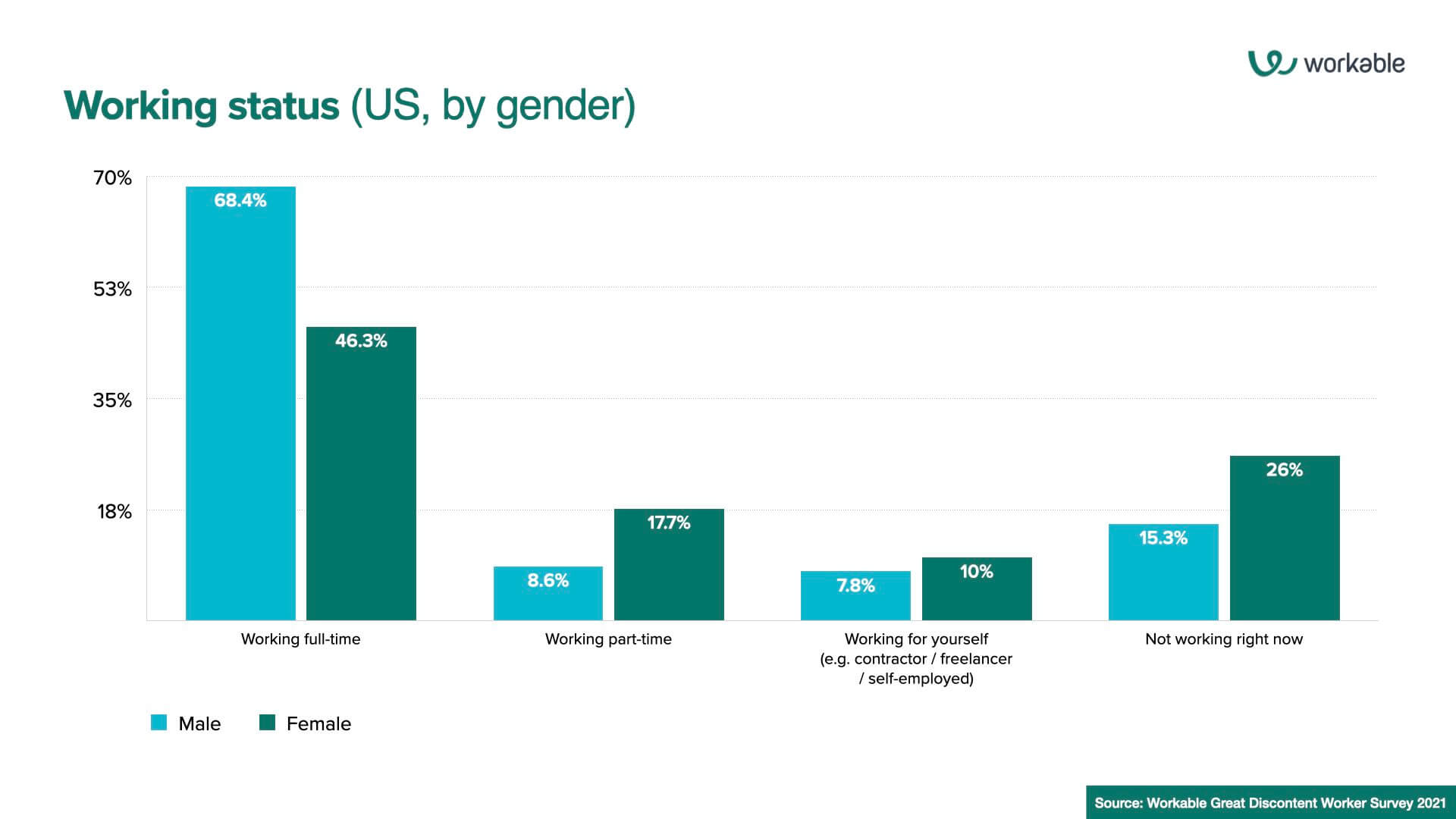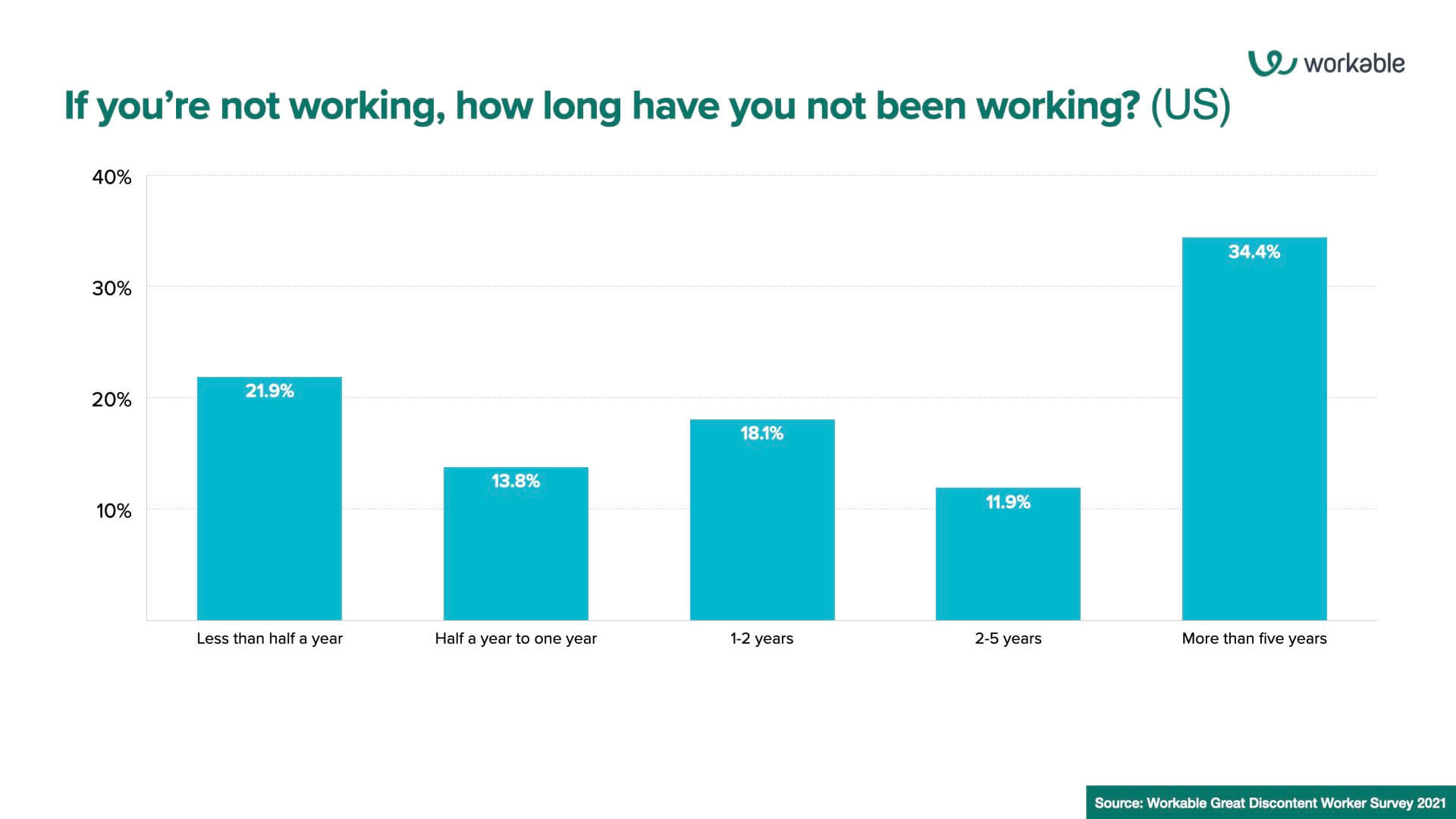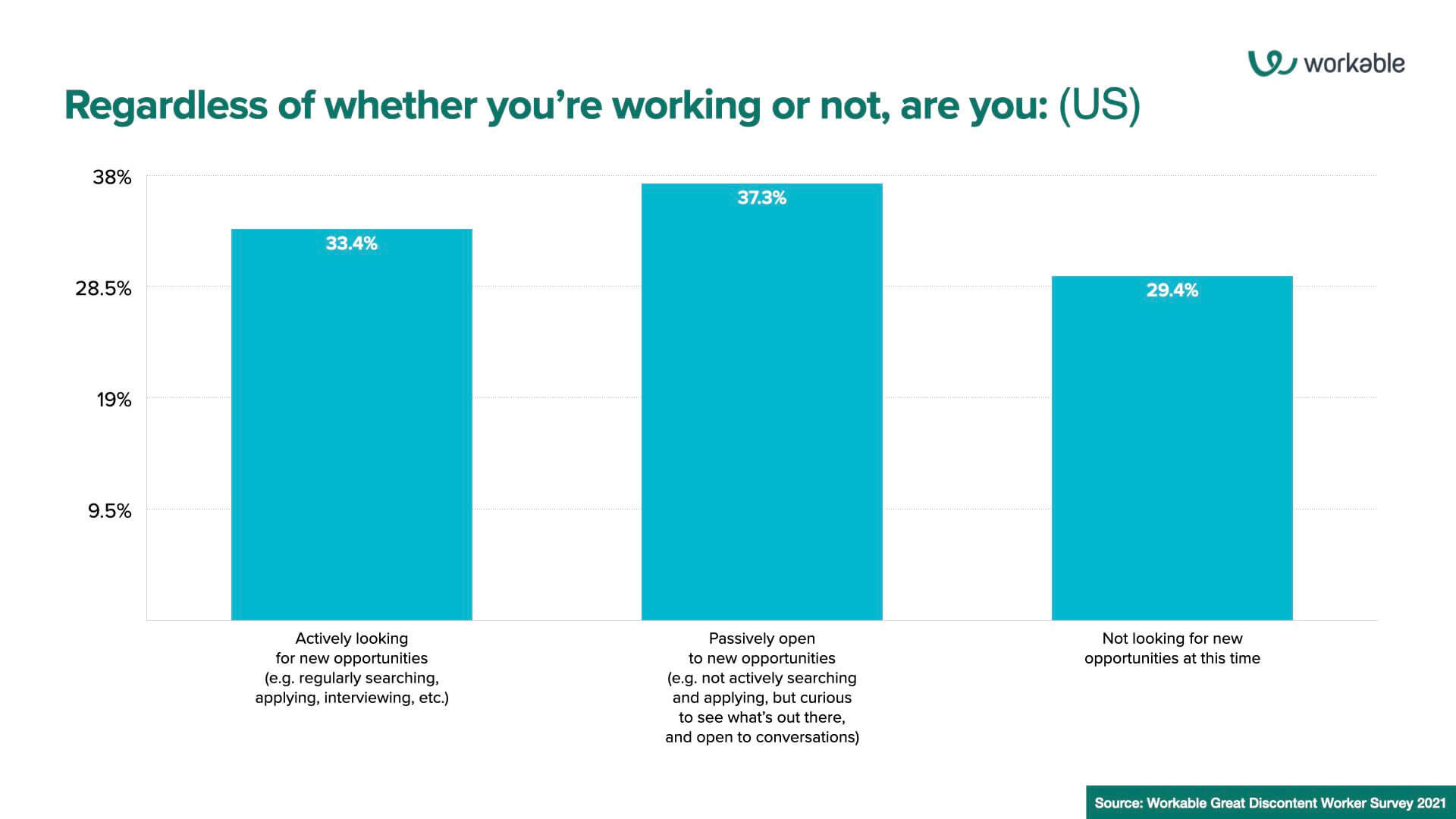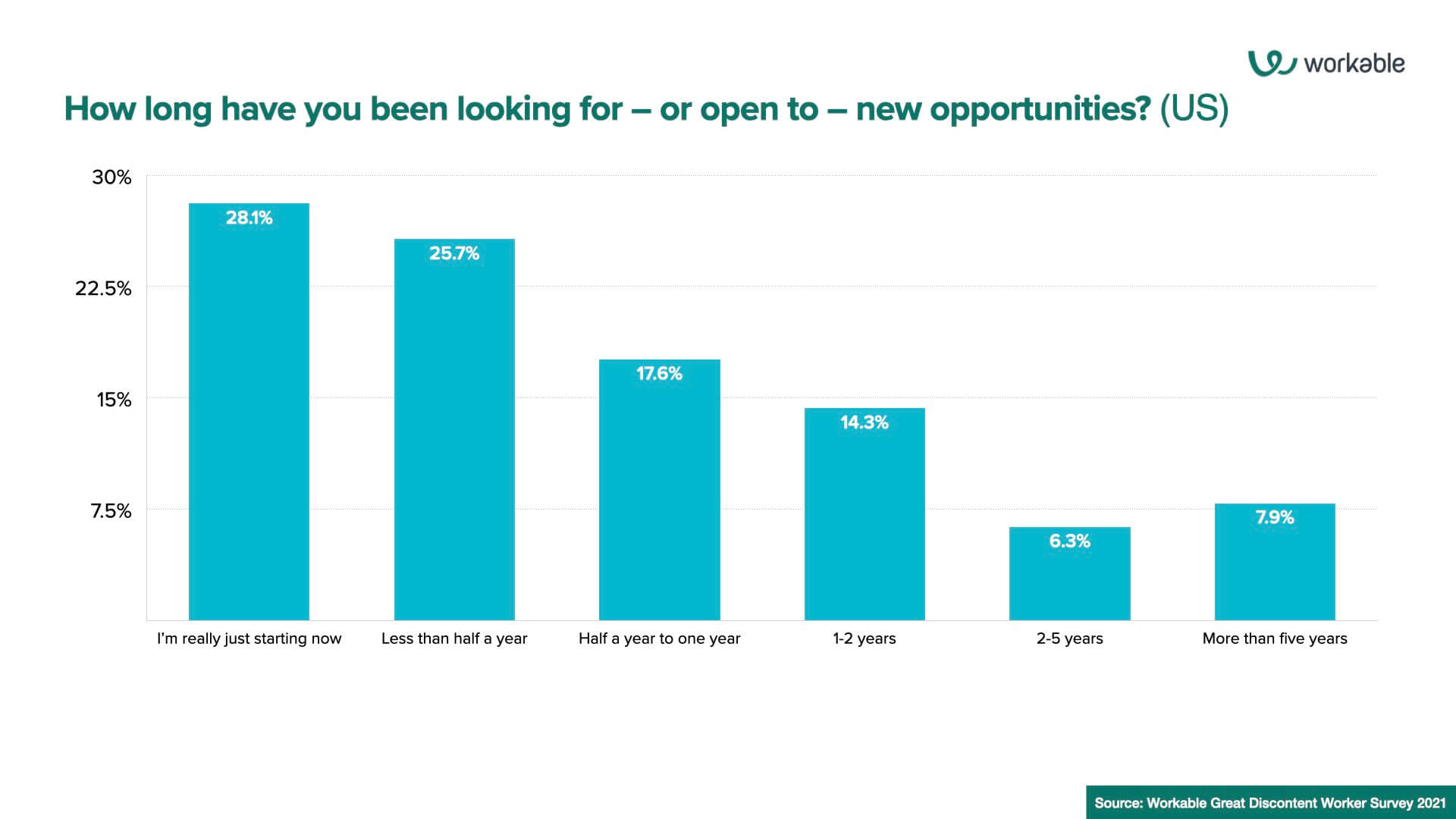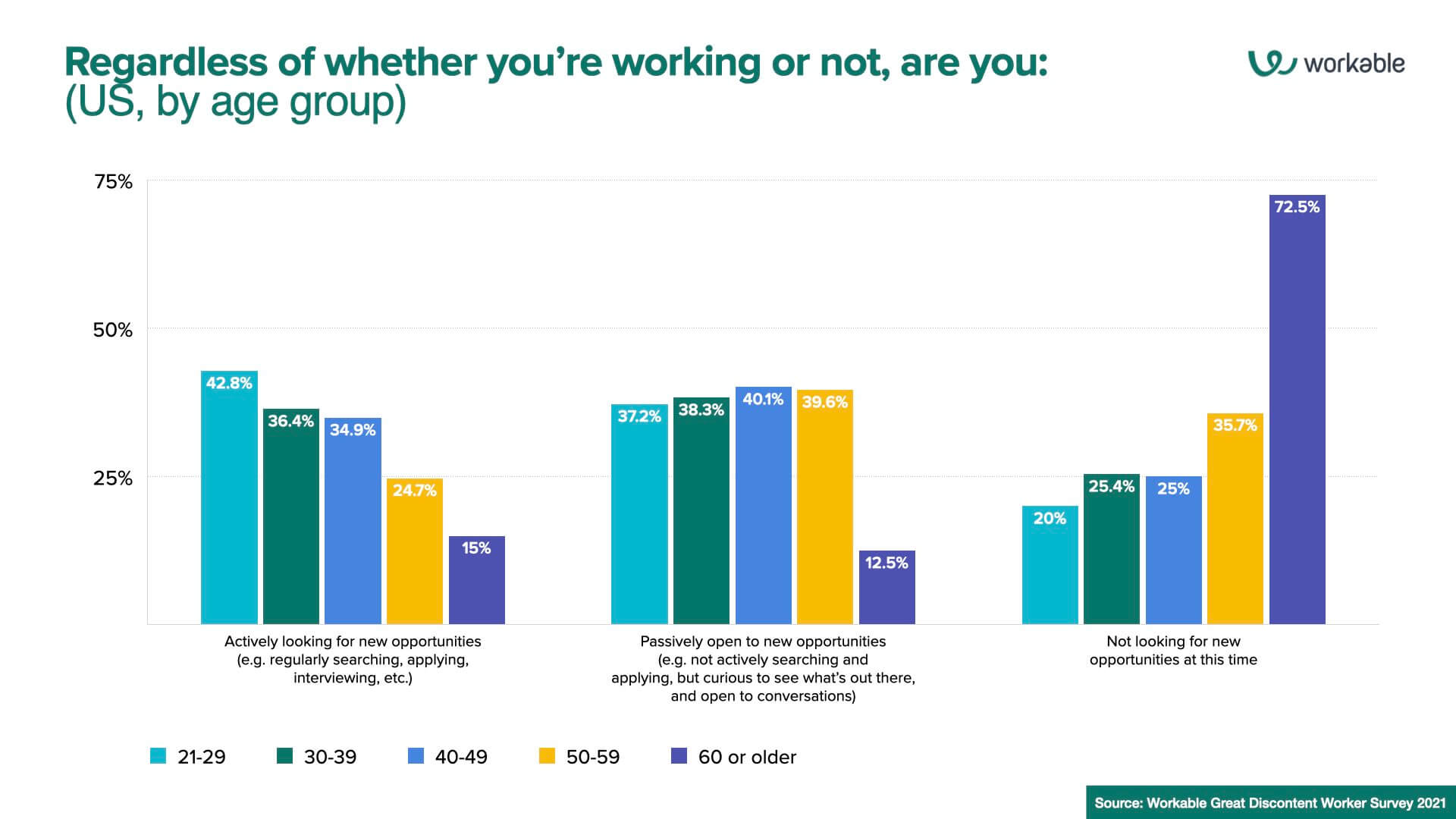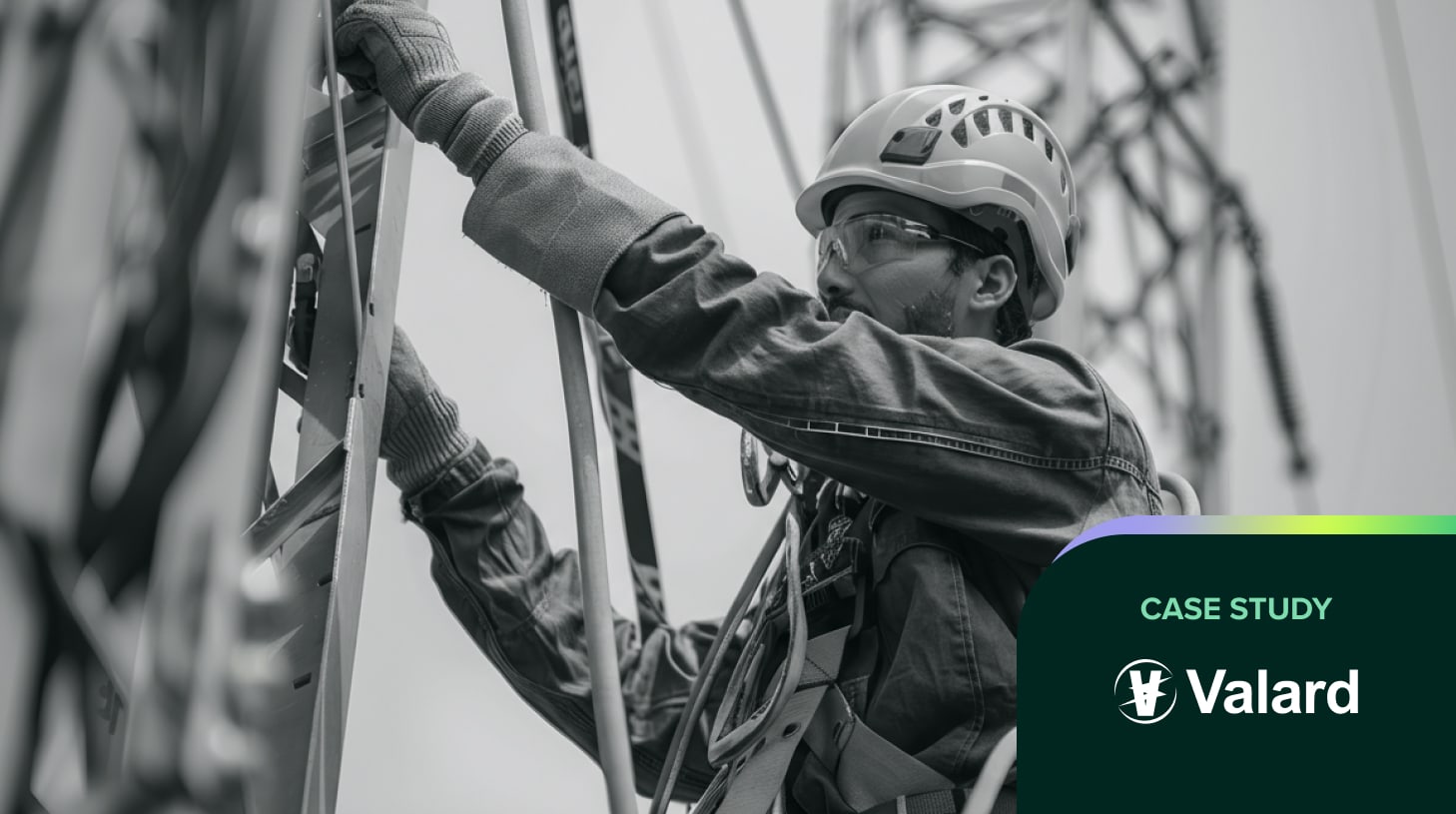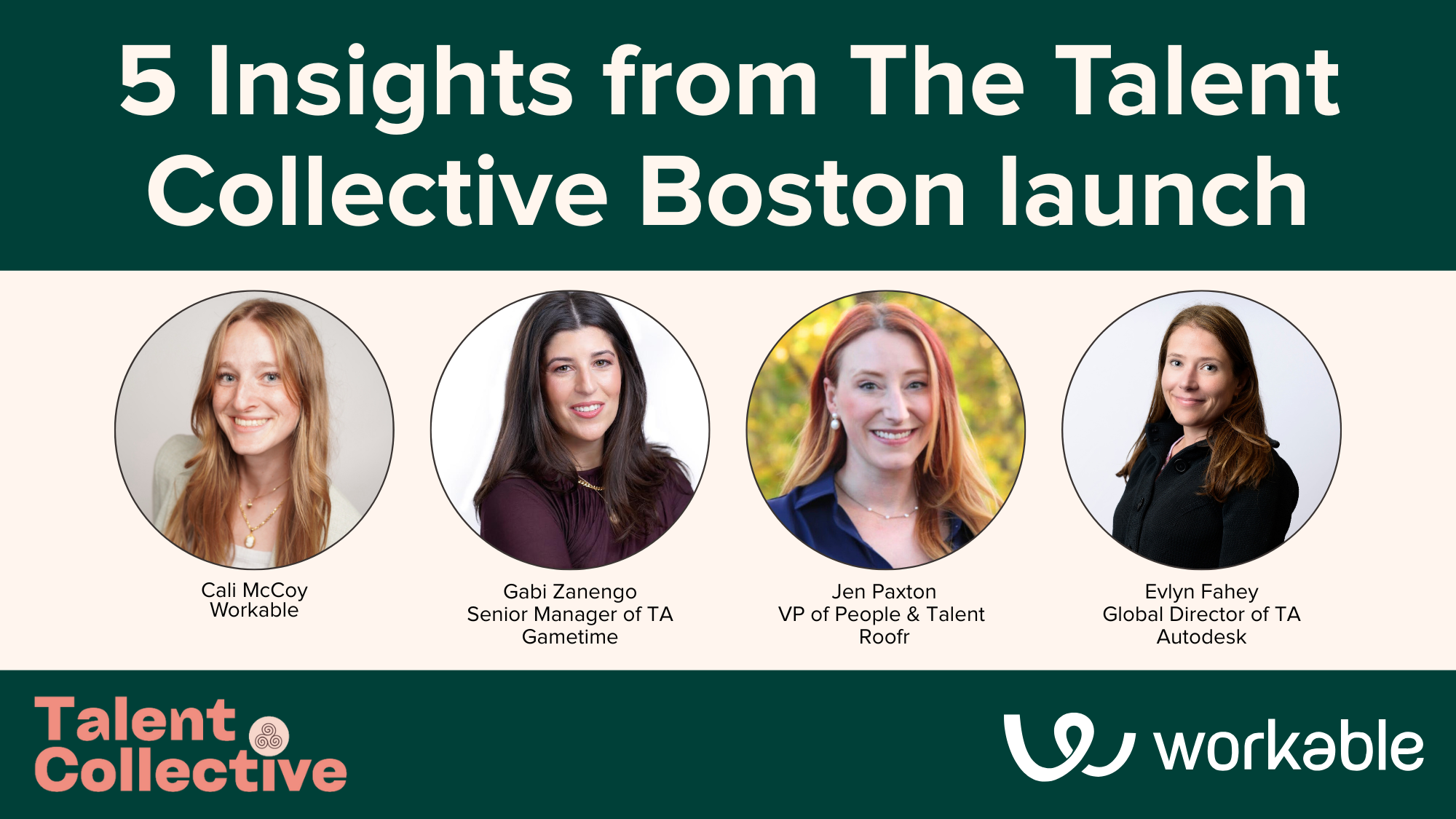70.7% of US workers have one foot out the door: Great Discontent survey
In such a volatile time, it’s crucial to establish a clear baseline when conducting such a comprehensive talent attraction study in our Great Discontent survey report for the US. That'll give us insight into the details around job motivators and employer attractors in the working environment in the United States.

So, we asked questions to learn the current professional situation of our respondents.
Here’s what we learned:
Most of our US respondents say they’re working full-time (55.3%), with an additional 13.5% working part-time.
One in 10 respondents (10.4%) say they’re working for themselves, whether that means they’re a contractor, freelancing, or running their own business.
One fifth of respondents (20.8%) say they’re not working right now.
Those identifying as females are far more likely to be not working (26% vs. 15.3%) or working part-time (17.7% vs. 8.6%) than males.
We also found an equally striking gender imbalance in those who are working. Those identifying as male are resoundingly more likely to be working full-time (68.4% vs. 46.3%, a difference of 22.1 in percentage points).
And for part-time workers, the opposite is true – 17.7% of those identifying as female are working part-time compared with 8.6% of males.
Of those not working, more than a third (34.4%) have not worked in more than five years.
More than a fifth (21.9%) say their current status not working began just in the last six months, with an additional 13.8% saying it’s been half a year to one year since they had been working.
And now, the important part for you, the employer: seven out of 10 (70.7%) say they are either actively (33.4%) or passively (37.3%) looking for work.
This means that when you look at your existing workforce, just three out of every 10 aren’t potentially looking for work at this time.
And many are actually just starting to look at other opportunities. Of those either actively looking or passively open to other work, 54% started within the last half year (28.1% just started now, 25.7% in the last half year).
Employers take note: this means a majority of your people are looking to leave or they’re open to that possibility. On the flip side, if you’re looking to hire or build teams, you have a wealth of available talent to tap into here.
This merits a deeper understanding of who these people are and why they’re looking, so you can evolve your recruitment and people strategy. Let’s dig in.
Minorities are looking
One of the demographic questions we asked in the survey was; “Do you identify as a member of a minority group (be it race, ethnicity, language, religion, country of origin, sexual orientation, gender, or another characteristic)?”. A full third (33%) say they do, compared with 61.6% who say they don’t, and 5.3% prefer not to say.
So we looked at responses based on those answers. Those identifying as minorities are much more likely to be actively looking (42.9% vs. 29.3%) than those not identifying as minorities.
Younger people are looking
While the “passively looking” category is equally represented across age groups from 21 to 49 years of age, it’s the “actively looking” category that is significantly represented by younger cohorts, with 42.8% of those aged 21-29 saying they’re outright looking for new opportunities.
And when combined, the numbers are striking: a staggering 80% of those aged 21-29, 74.9% of those aged 31-39, and 75% of those aged 40-49 are either actively looking for or passively open to work right now.
We know that tenures are usually shorter for younger people. Also younger people tend to be more in rank-and-file positions than managerial/upper-crust positions, and those tend to see higher turnover.
But it also means younger generations in the United States expect more from their employers and are less willing to put up with the current reality in the workplace.
All in all, people are looking
Again, this points to a clear message: seven out of 10 employees at your company have one foot out of the door at any given time. Your talent is ready to leave as soon as they find something better. That’s particularly if they’re younger or if they identify as a minority.
But again, this is a huge talent market right here that you can tap into when hiring. Which raises a new question – how do you attract them to your company?
We’ll cover this in detail in the next few articles, but if you want to read more right now, jump right into our comprehensive Great Discontent US worker survey report right here.


